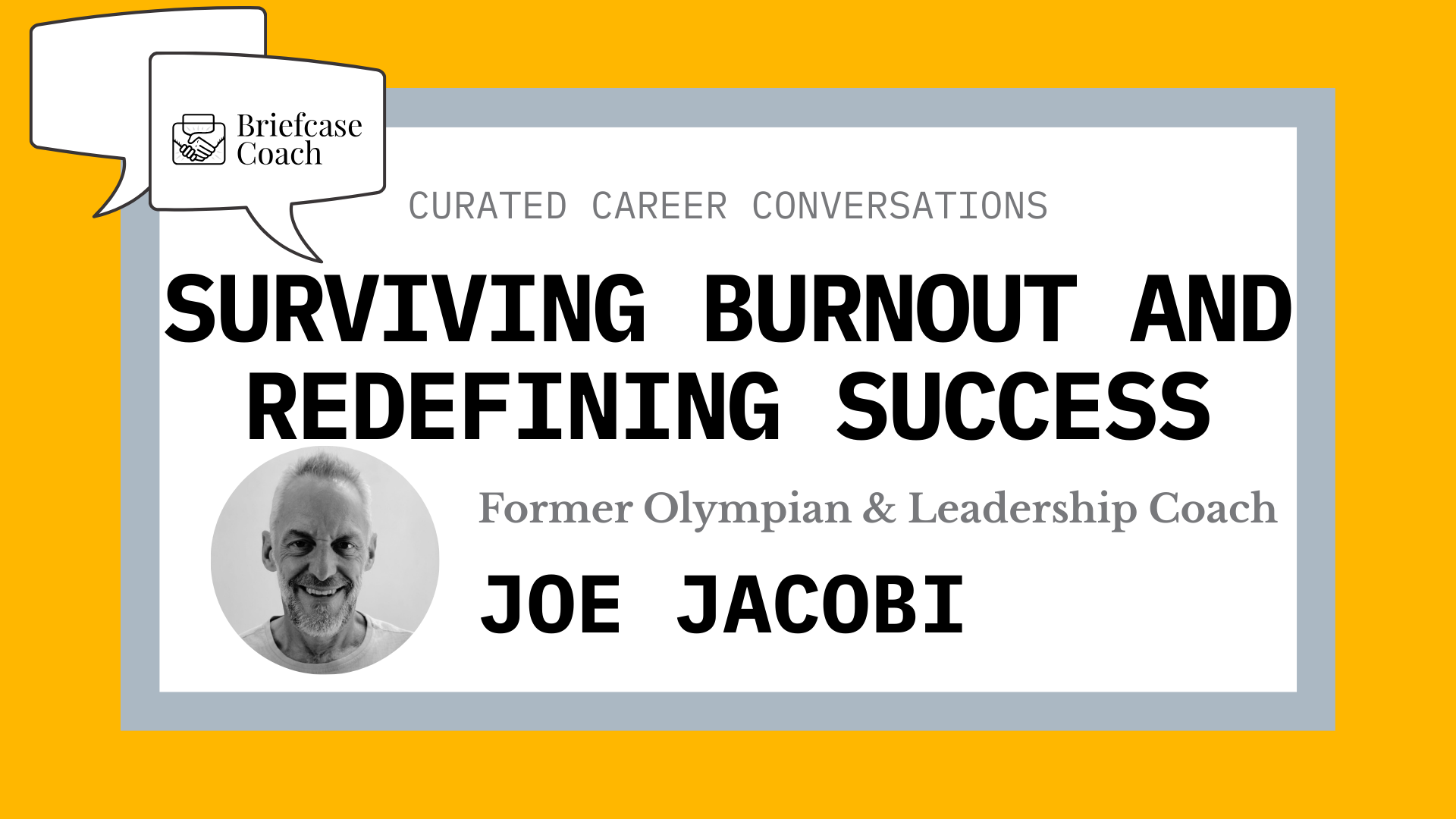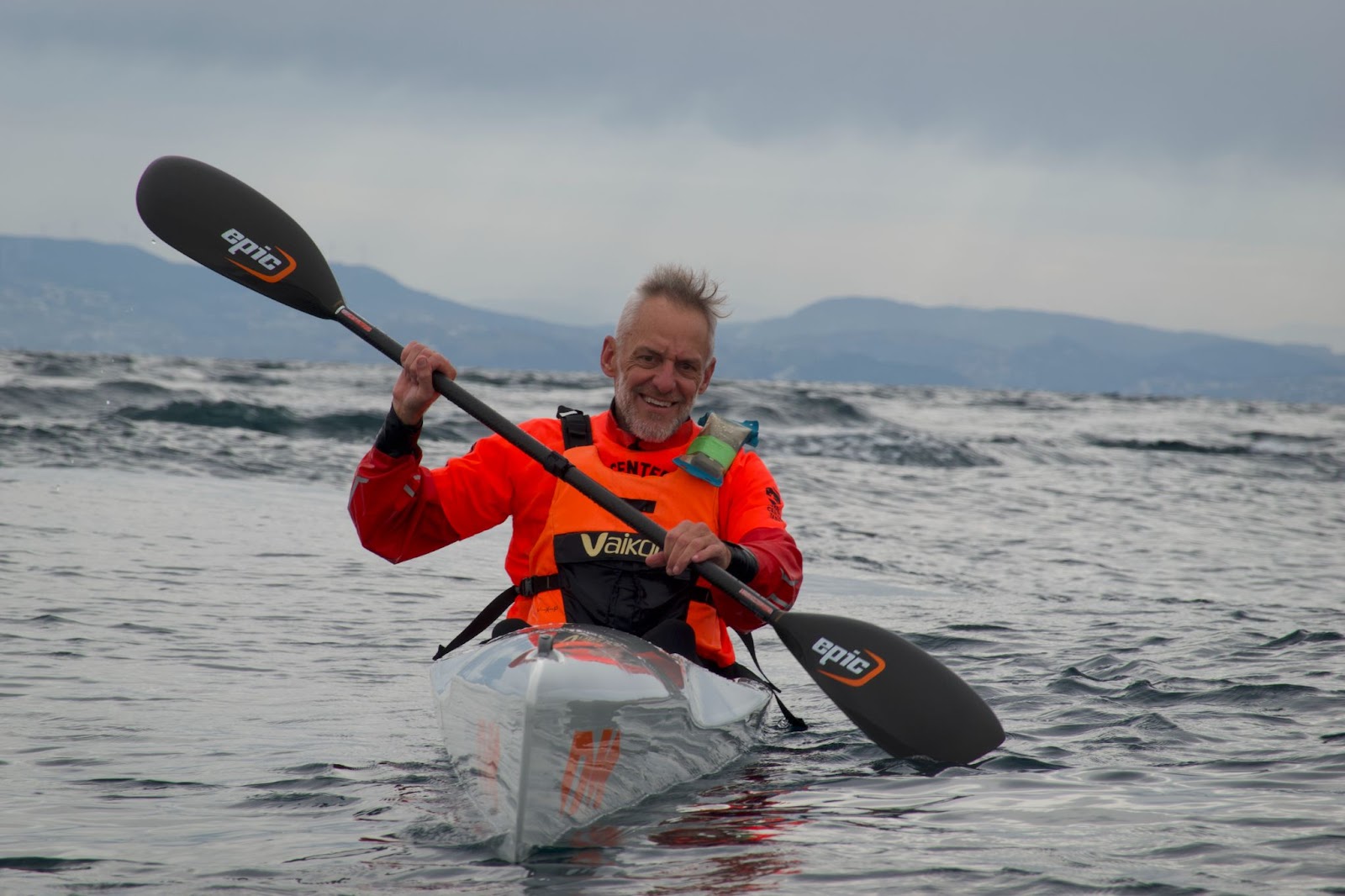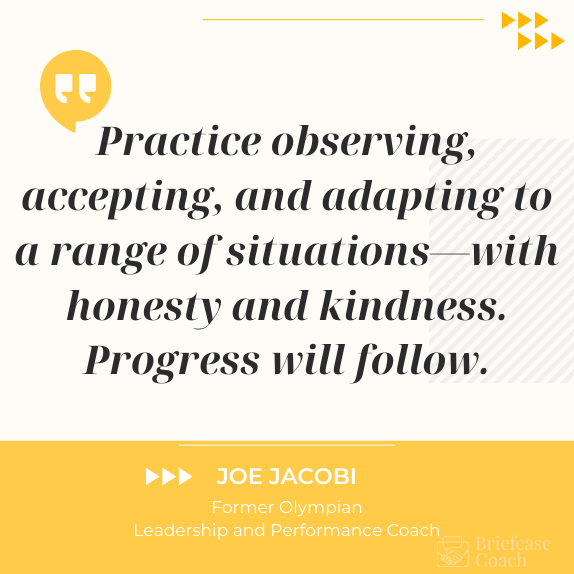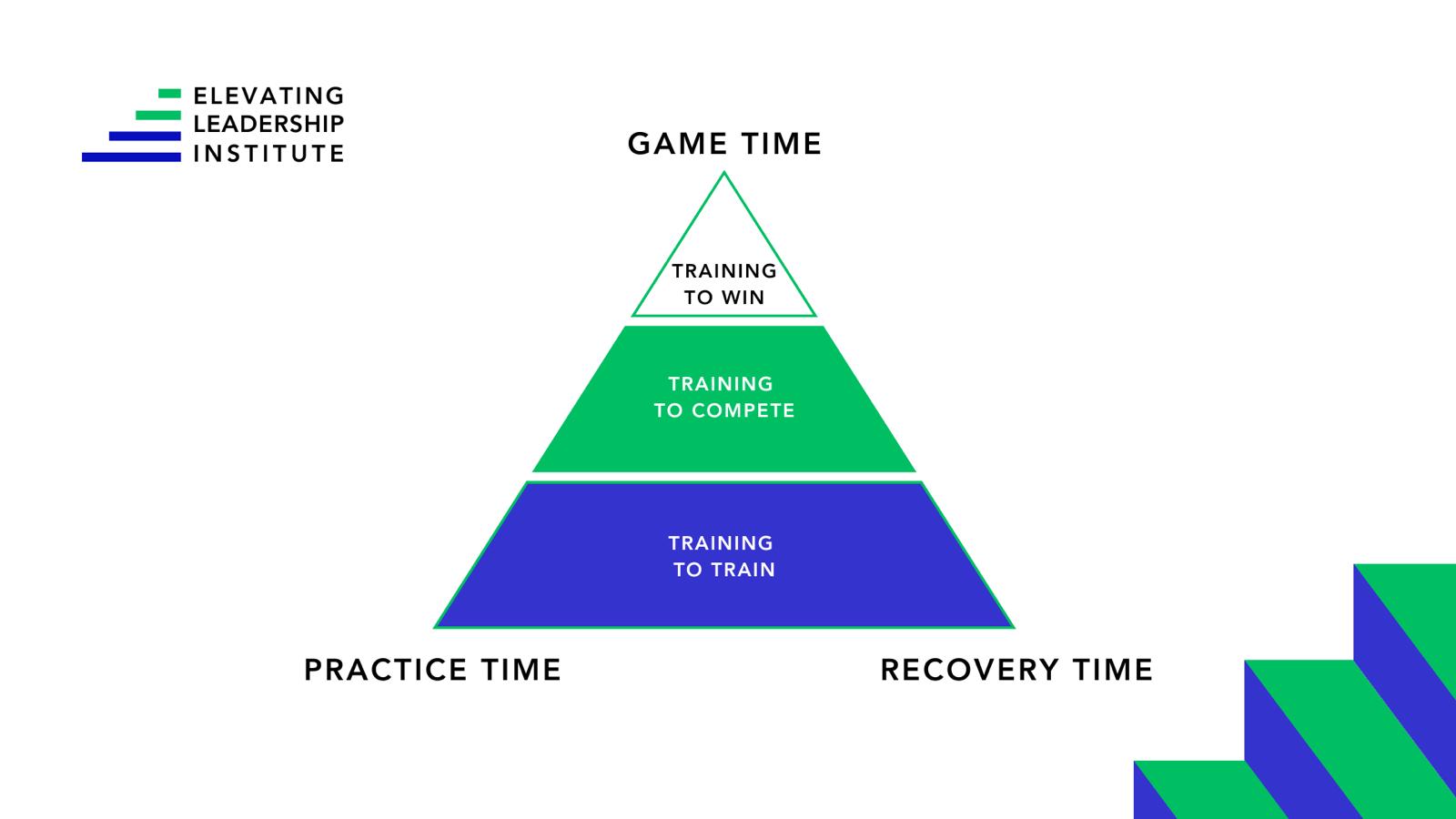
A Curated Career Conversation with Joe Jacobi
In today’s high-pressure environment, where leaders face relentless challenges while striving for success, burnout has become an all-too-common reality. As the founder of Briefcase Coach, a leading executive career branding firm, I’m passionate about helping professionals navigate these obstacles and find sustainable solutions. Today, I’m thrilled to share insights from Joe Jacobi, an Olympic Gold Medalist, Performance Coach, and Author, who partners with top leaders to help them reconnect with their purpose, achieve true success, and maintain a healthy work-life balance.
In our conversation, we explored the rise of executive burnout and the need to redefine success through sustainable energy management and self-leadership. Joe shared the importance of finding your “Basic Speed”—a steady, everyday rhythm that supports long-term performance—and encouraged leaders to nurture all areas of life, not just work. He also introduced tools like “Midlife Peak Performance” and immersive coaching experiences that help high achievers reset their inner compass and lead with greater clarity, purpose, and joy.
From Burnout to Balance: How Executives Can Lead with Clarity and Joy
Sarah Johnston (SJ): I’m noticing a growing trend of massive burnout, especially as work continues to rapidly evolve. I’m being connected with people who’ve recently lost their jobs after pouring 100% of themselves into their work. Many of them share that despite not having a paycheck, they feel a huge sense of relief after working 20-hour days. You’ve done a lot of work around helping executives set boundaries and prioritize their time—what are your thoughts on this dynamic and how burnout is showing up in leadership?
Joe Jacobi (Joe): One of the things I’ve noticed over the years of our friendship is the strong alignment between your work in career development & transition and my work in performance coaching. One of the divides—and a gap I believe we can help close together—is the timing of our respective work. When it comes to burnout and the pressure of going all-in all the time, why wait until a job is lost?
Solving burnout is about managing energy over time. Effective energy management involves not only understanding how and when to expend energy, but also recognizing that sustained performance requires regular replenishment. This means allowing time for rest and recovery in various forms and at periodic intervals. In leadership coaching, this is often the turning point where leading others shifts to leading self.
I apply this approach in my own life through a set of systematic steps I learned when I started surfing offshore ocean waves on a surfski kayak. The first step in this Wave Surfing Progression is Basic Speed—your everyday, all-day pace. Managing and improving Basic Speed comes before higher-level elements like purpose, goals, and strategy. However, those higher-level elements become accessible once we expand our capacity through manageable energy expenditure and regular replenishment.

If you’re currently in a career transition, start by focusing on Basic Speed as the foundation of your job search. And remember, don’t stop once you land your next opportunity. For those of you still employed, don’t wait—prioritize Basic Speed now. To ride the best and most spectacular waves in both life and work, you can’t do it from a standstill. You need steady movement that’s in sync with the opportunities meant for you.
Sarah Johnston (SJ): Executives are often praised for their resilience and ability to push through challenges, but there’s a fine line between perseverance and self-sacrifice. How do you help leaders recognize when they’re crossing that line, and what strategies do you recommend for sustaining high performance without burning out?
Joe: At the heart of this topic is what I call the How Not to Win an Olympic Gold Medal Method. In this mindset, people convince themselves that high-performance success only comes through being fierce, gritty, and relentlessly driven—as if they need to adopt a specific identity to win. But that’s simply not true. What’s actually needed to navigate the fine line between perseverance and self-sacrifice is a willingness to accept self-feedback through a lens of self-kindness.
With practice, we can learn to speak to ourselves honestly—removing the fluff and bravado. We can update, reset, and strengthen our Inner Voice to reflect the reality of how we’re feeling, allowing clearer choices to emerge. In a critical moment, we might not be feeling our best, but we can still recognize that we’ve done the work, understand the task, and are capable of performing at a high level anyway.

The most painful mistake I see in both sport and leadership is when someone convinces themselves they’re feeling amazing and at 100%” when, in reality, they’re actually at a “could be better” and at 45%. Practice observing, accepting, and adapting to a range of situations—with honesty and kindness. Progress will follow.
Sarah Johnston (SJ): Many executives I speak with feel trapped in their leadership roles, caught between the pressures of their responsibilities and the desire for a better work-life balance. In your experience, what are some of the key signs that an executive is feeling this way, and how do you help them navigate these feelings?
Joe: When I was CEO of a national sports governing body under the U.S. Olympic & Paralympic Committee, I lived in a figurative one-room house—the business room. If business was good, life was good. If business was bad, life was bad.
Now, my figurative home has four rooms, which all represent different aspects of my life: a business room, a relationships room, a health and wellness room, and a creativity room. It sounds simple, but only in the last few years have I truly learned to live with peace and joy in this home.
To help an executive free themselves from and within their leadership roles, I want to understand: are there other rooms in their home? And if so, what is the state of those rooms?
Here’s the unexpected revelation about the power and synergy of managing healthy rooms in your home. Each of these rooms influences the others. For example, if my work life (the business room) is chaotic, it can affect my relationships, health, and creativity. Similarly, if I neglect my health (the health and wellness room), it can drain my energy and impact my work or relationships.
The key point is that achieving balance in all of these areas—rather than focusing only on one—is crucial to my overall well-being and success. So, instead of just working harder in my business room when things are tough, I often find it more effective to focus on strengthening the other areas. By improving the health of all the rooms, I can increase my overall life harmony.
Sarah Johnston (SJ): One challenge I see for busy executives when considering working with someone like you is finding the time to actually commit. Given how short on time they are, how do you help them prioritize working on themselves and their leadership during such demanding periods?
Joe: Prioritization connects directly back to the first question—and to the concept of managing energy over time. As we improve our energy management, we begin to see and shape time differently.
Last year, while working with a client, I combined two performance concepts into a single model that became our Performance Pyramid.

At the outer points of the pyramid are three key areas of performance. Inside the pyramid, there’s a progression that guides us in moving strategically and with intention.
The top of the Performance Pyramid is a small space, meant to be entered and exited quickly. Not everything can be a high-priority, high-stakes task. But for the things that are, the time and energy invested in the foundational levels of the pyramid allow us to reach those “Elevated Moments” at the top.
Prioritization is about discernment. We need to be clear about what doesn’t belong in “Game Time” or “Training to Win” modes. In simple terms, our success isn’t determined by how we perform at the top of the pyramid. It’s determined by how we move tasks—and ourselves—into the foundational levels where growth and preparation happen.
Sarah Johnston (SJ): You talk a lot about redefining success beyond traditional career milestones. For leaders who have spent decades chasing promotions, influence, and financial success, how do you guide them toward a more fulfilling, sustainable definition of achievement?
Joe: Redefining success beyond traditional career milestones is a powerful conversation. It invites two critical realizations:
- We carry a lot of programming—from people, events, culture, and experiences—that has shaped how we define success today.
- And… we do have the ability to reset and redesign what success means going forward, so we can live, learn, and enjoy with greater intention.
At the core of a more fulfilling and sustainable definition of achievement is the willingness to unlearn. This means revisiting what we’ve believed to be true about success and questioning whether it was ever fully true, partly true, or not true at all.
Deep curiosity drives this process. As we walk this path, we begin to confront the people, systems, and definitions that once shaped our idea of peak performance. In doing so, we shift the power back to ourselves, allowing us to define it on our own terms. I call this Midlife Peak Performance and one of the pillars of Midlife Peak Performance is something I call Embracing Lightly, which breaks down into three practical steps:
- Hold It Lightly – Turn rigid opinions into exceptional questions. Open the door to more than one idea being true at once.
- Wear It Lightly – Let go of past identities and replace them with a breathable, adaptable outer layer. Create space to shift identity and reset your Inner Voice.
- Travel Lightly – Less equals simplicity which leads to agility. Focus on the journey, and question the weight of the baggage we think we need to carry.
Sarah Johnston (SJ): You’ve recently launched a new coaching intensive and are developing experiential coaching retreats. Can you tell me more about it and how it’s helping executives unlock new insights or make meaningful changes in their leadership journey?
Joe: If you’ve come this far in the conversation with us, it’s no surprise—performance and leadership are inside jobs.
While we all strive for external milestones of success, few of us are investing in ourselves in ways that flip the traditional leadership development script—from chasing outside results to cultivating inner practices and values alignment that shape a better version of ourselves tomorrow than we were today.
So, we’re changing that.
My co-founders at the Elevating Leadership Institute and I have developed a five-week Self Leadership Sprint—a group program grounded in the principles of elite-level sport. It’s led by Olympian Performance Coaches and empowers leaders with strategies and mindsets to lead with impact across multiple areas of life. The Sprint connects directly into our ongoing High Performance Leadership Coaching Community, which offers monthly Q&As, guest seminars, and 1:1 structured growth conversations. Many of our clients use this experience to sharpen their edge—especially during career transitions.
Outside of the Elevating Leadership Institute—and returning to your question about how to find the time to invest in yourself—not everyone thrives on once- or twice-a-month Zoom sessions.
What I know from my experience as an Olympic athlete and a passionate adventurer is this: a training camp can be a transformative, dynamic, and fun way to expand your performance capacity. Having lived in Catalunya, Spain, for seven years—in the same city where my canoe partner and I won Olympic gold—I have access to stunning river and seaside locations perfect for one-of-a-kind experiential coaching retreats.
Just a few hours after landing in Barcelona, we can be fully immersed in a game-changing natural environment. Here, we disconnect from the routine and step into a powerful mix of adventure, challenge, instruction, and reflection—unlocking deep, lasting growth in just a few days.
Stepping outside of our usual environment and opening ourselves to new perspectives is essential for real change. I’m so excited to welcome clients to the very places—and people—that helped me grow, and to share the magic of this beautiful corner of Catalunya.
A huge thank you to Joe Jacobi for sharing his expert advice on managing burnout and leading with purpose. Be sure to check out his book Slalom: 6 River Classes About How To Confront Obstacles, Advance Amid Uncertainty, & Bring Focus To What Matters Most , which delves deeper into his reflections, experiences, relationships, and strategies from over 40 years on the river—now applied to navigating life’s challenges. You can also explore his Thinking In Waves series, short and focused weekly essays where Joe shares his experiences surfing offshore ocean waves on a surfski kayak, using it as a method for deep reflection and meaningful life transformation.
I hope this conversation has sparked new insights and ideas about how to approach your career and leadership in a more sustainable and fulfilling way. Whether you’re dealing with burnout, striving to balance work and life, or simply seeking a more purposeful path, remember: it’s about aligning your energy with your values and creating space for growth in all areas of life. By embracing strategies like “Basic Speed” and redefining success, you can lead with clarity, joy, and resilience.
Now, I challenge you to pause and think about how you can better manage your energy moving forward. What small changes can you make to ensure you’re leading in a way that reflects your true values and goals? I’d love to hear how these ideas are impacting your journey—join the conversation in the comments or connect with me on LinkedIn!


Leave a Reply